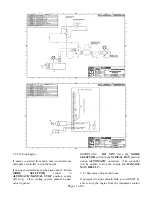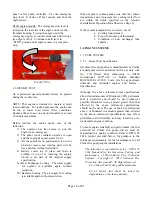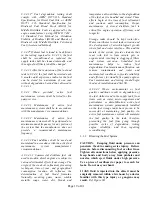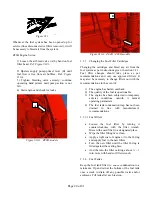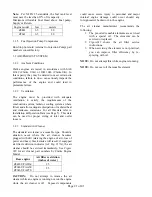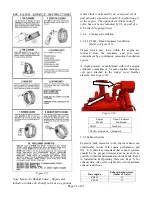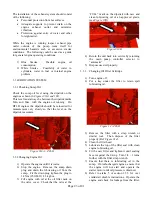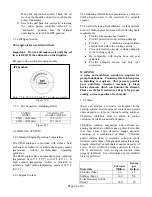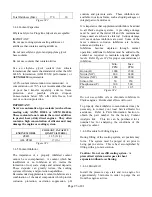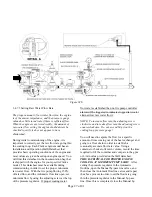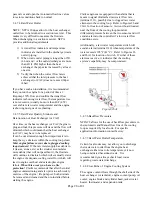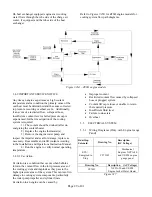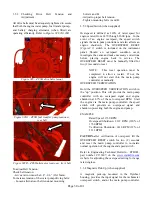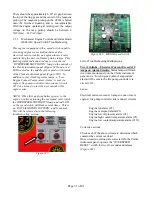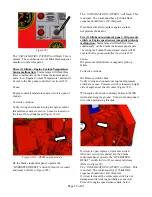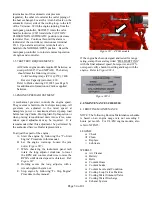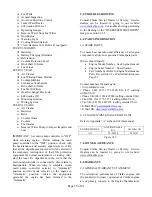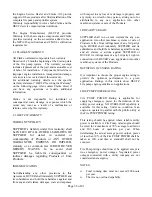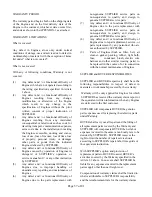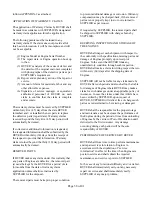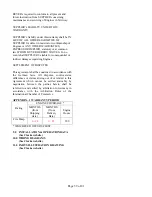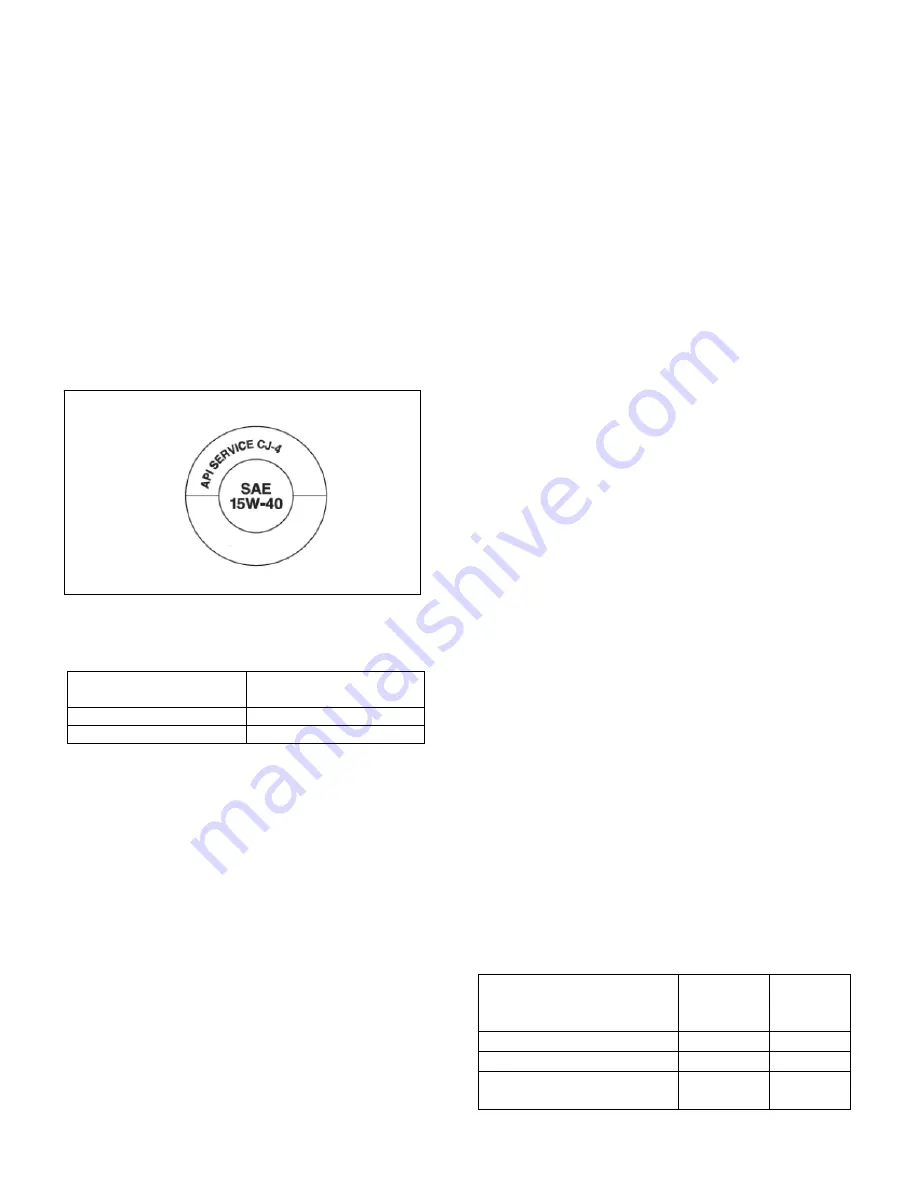
Page 24 of 41
When the engine has cooled, check the oil
level on the dipstick and put more oil into the
sump, if necessary.
9)
Return the unit back into service by returning
the main pump controller selector to
“automatic” position and the manual
operating lever to AUTO-OFF position.
3.3.4 Oil Specification
This engine is factory-filled with oil.
Important: Do not add makeup oil until the oil
level is BELOW the add mark on the dispstick.
Oil spec to be used for all engine models:
API Symbol:
Note: CF-4, CG-4, CH-4 and CI-4 are also acceptable
Figure #20
3.3.5
Oil Capacities (Including Filter)
ENGINE
MODEL
OIL CAPACITY
QUARTS (LITERS)
ZE4H – All Models
12.2 (11.5)
ZF6H – All Models
22.7 (21.5)
Figure #21
3.4 COOLING SYSTEM
3.4.1 Intended Engine Operating Temperature
The ZF6H engines are provided with either a heat
exchanger or radiator to maintain the engine coolant
temperature within recommended operating
guidelines.
The ZF6H engines have an intended engine operating
temperature of 160º F (71ºC) to 190º F (88º C). A
high coolant temperature switch is provided to
indicate a high coolant temperature alarm at 205º F
(96º C).
3.4.2 Engine Coolant
The following information is provided as a guide for
Clarke Engine users in the selection of a suitable
coolant.
The water/ethylene glycol/inhibitor coolant mixture
used in Clarke engines must meet the following basic
requirements:
Provide for adequate heat transfer.
Provide protection from cavitation damage.
Provide a corrosion/erosion-resistant
environment within the cooling system.
Prevent formation of scale or sludge deposits
in the cooling system.
Be compatible with engine hose and seal
materials.
Provide adequate freeze and boil over
protection.
WARNING
A water and anti-freeze solution is required for
pump installations. Premixing this solution prior
to installing is required. This prevents possible
pure anti-freeze chemical reactions to block
heater elements which can burnout the element.
Please see the I&O section (see Page 5) for proper
cooling system capacities of each model.
3.4.3 Water
Water can produce a corrosive environment in the
cooling system, and the mineral content may permit
scale deposits to form on internal cooling surfaces.
Therefore, inhibitors must be added to control
corrosion, cavitation, and scale deposits.
Chlorides, sulfates, magnesium and calcium are
among the materials which make up dissolved solids
that may cause scale deposits, sludge deposits,
corrosion or a combination of these. Chlorides
and/or sulfates tend to accelerate corrosion, while
hardness (percentage of magnesium and calcium salts
broadly classified as carbonates) causes deposits of
scale. Water within the limits specified in
Figure
#22 is satisfactory with an engine coolant when
properly inhibited. Use of deionized or red distilled
water is preferred.
Materials
Parts per
Million
Grains
per
Gallon
Chloride (Max.)
40
2.5
Sulfates (Max.)
100
5.8
Total Dissolves Solids
(Max.)
340
20








